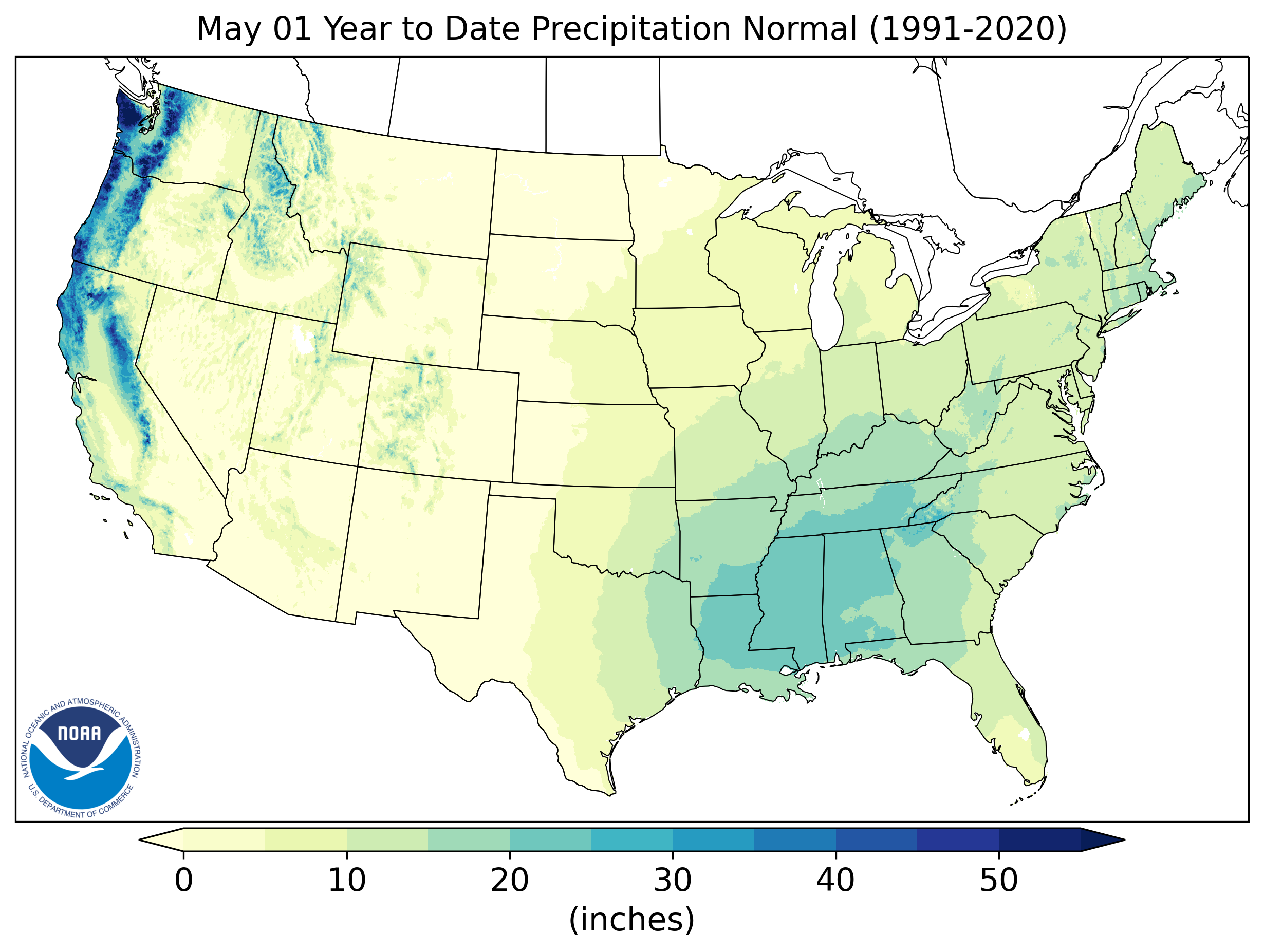U.S. Climate Normals 2020: U.S. Daily Climate Normals (1991-2020)
The Daily Climate Normals for 1991 to 2020 are 30-year averages of meteorological parameters that provide users the information needed to understand typical climate conditions for thousands of locations across the United States, as well as U.S. Territories and Commonwealths, and the Compact of Free Association nations. The stations used include those from the NWS Cooperative Observer Program (COOP) Network as well as some additional stations that have a Weather Bureau Army-Navy (WBAN) station identification number, including stations from the U.S. Climate Reference Network (USCRN) and other automated observation stations. In addition, precipitation normals for stations from the U.S. Snow Telemetry (SNOTEL) Network and the citizen-science Community Collaborative Rain, Hail and Snow (CoCoRaHS) Network are also available. The Daily Climate Normals dataset includes various derived products such as air temperature normals (including maximum and minimum temperature normals, heating and cooling degree day normals, and others), precipitation normals (including precipitation and snowfall totals, and percentiles, frequencies and other statistics of precipitation, snowfall, and snow depth), and agricultural normals (growing degree days (GDDs)). All data utilized in the computation of the 1991-2020 Climate Normals were taken from the Global Historical Climatology Network-Daily, but the Daily Normals are adjusted so that they are consistent with the Monthly Normals. The source datasets (including intermediate datasets used in the computation of products) are also archived at NOAA NCEI. A comparatively small number of station normals sets (~50) have been added as Version 1.0.1 to correct quality issues or because additional historical data during the 1991-2020 period has been ingested.
- Cite as: Palecki, Michael; Durre, Imke; Applequist, Scott; Arguez, Anothony; Lawrimore, Jay. 2021: U.S. Climate Normals 2020: U.S. Hourly Climate Normals (1991-2020). [indicate subset used]. NOAA National Centers for Environmental Information. https/doi.org/{{DOI}}. Accessed [date].
- NCEI DSI: 2049_01
- gov.noaa.ncdc:C01621
C01621
| Search Data |
|
| Download Data |
|
| Distribution Formats |
|
| Ordering Instructions | Contact NCEI for other distribution options and instructions. |
| Distributor | NOAA National Centers for Environmental Information
ncei.info@noaa.gov |
| Dataset Principal Investigator | Michael Palecki
Project Manager for Normals National Centers for Environmental Information/NOAA 8282714340 michael.palecki@noaa.gov |
| Time Period | 1991-01 to 2020-12 (time interval: 1-day) |
| Spatial Reference System | urn:ogc:def:crs:EPSG::4269 |
| Spatial Bounding Box Coordinates |
N: 72.0
S: -15.0
E: -64.0
W: 134.0
|
| Spatial Coverage Map | |
| General Documentation |
|
| Associated Resources |
|
| Publication Dates |
|
| Edition | 1.0.1 |
| Data Presentation Form | Digital document - digital representation of a primarily textual item (can contain illustrations also)
|
| Dataset Progress Status | Complete - production of the data has been completed |
| Data Update Frequency | As needed |
| Purpose | NOAA NCEI and NOAA NWS will be primary users of this dataset. Other users include many federal, state, and local government agencies; corporations and individuals in all U.S. Economic Sectors, and the general public. The archived data will be be used to compare local climates across the United States. It will also be used to place current observations in context by allowing the calculation of anomalies (differences from normals) from a consistent reference period of record. |
| Use Limitations |
|
| Dataset Citation |
|
| Cited Authors |
|
| Principal Investigators |
|
| Processors |
|
| Sponsors |
|
| Publishers |
|
| Theme keywords | Global Change Master Directory (GCMD) Science Keywords
|
| Data Center keywords | Global Change Master Directory (GCMD) Data Center Keywords
|
| Place keywords | Global Change Master Directory (GCMD) Location Keywords
|
| Data Resolution keywords | Global Change Master Directory (GCMD) Horizontal Data Resolution Keywords
|
| Stratum keywords | Global Change Master Directory (GCMD) Location Keywords
|
| Use Constraints |
|
| Access Constraints |
|
| Fees |
|
| Lineage Statement | The Daily Normals are generated from Global Historical Climatology Network Monthly V.4 and Daily V.3 using Fortran software routines developed for the 1981-2010 normals production and updated for technical improvements. |
| Processor |
|
| Processing Steps |
|
| Processing Environment | The input files are available in an ascii format, piped to scripts and programs on normalswork-dev, and completed as *.csv files in bulk variable storage and station file storage formats. They are then validated and quality controlled, and shipped to climon-prod for shipping to archive directories and online storage directories. |
Last Modified: 2023-08-10
For questions about the information on this page, please email: ncei.info@noaa.gov
